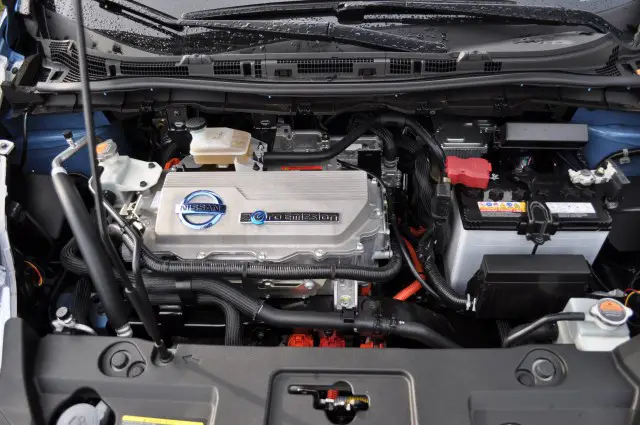Electric Car Maintenance And Service
Pure electric cars are in many ways a lot simpler than our conventional petrol or diesel cars. Which can make electric car servicing…


Pure electric cars are in many ways a lot simpler than our conventional petrol or diesel cars. Which can make electric car servicing easier and maintenance costs less likely; helping to keep costs (and hassle) to a minimum.
To ensure they run smoothly and reliably, trusty petrol and diesel cars require a number of parts. Exhausts; catalytic converters; starter motors, spark plugs, oil, cooling systems; engine dampers; fuel injection systems; fuel pumps. Pure electric cars, on the other hand, have only three main components: the electric motor; the onboard charger and the inverter.
This is one of the main reasons electric cars and vans can cost less to service and need less maintenance. When you next service your current car, spare a moment to look at what you’re paying for: new engine oil and filter, replacement spark plugs; air filters; perhaps new engine coolant? A pure electric car doesn’t need any of these. Electric motors themselves have proved to be very robust and can require very little maintenance.
- Battery care
Your electric car’s battery, not it's motor, is more analogous to a regular car’s engine in terms of cost and value. It’s the heaviest assembly, the most expensive and a big factor in the car’s future residual value. Take care of it like you would an engine by knowing that it can suffer when it’s sitting in overly hot or cold temps for too long, allowed to go totally dead, or charged too much or too often. The details of those parameters are in the owner’s manual and if you read nothing else of it, at least read that section. - Brake service
Separate from brake fluid is the brake pads and discs. How often an EV needs them serviced depends on how much you drive, how hard you drive, what regeneration settings you use and the terrain in your area. The best EV pilots read the traffic ahead and try never to use their brakes, and the lesser ones mash the brake pedal frequently and will be facing brake jobs.
3. Coolant service
Battery electric cars have no engine but they still have coolant keep that big battery from doing what it naturally wants to do such as catching fire. Coolant system-flush intervals vary widely, from every four years or 50,000 miles for a Tesla Model 3, to every 150,000 miles for a Chevy Bolt.
4. Brake fluid service
Even though electric cars do most of their everyday stopping via regenerative braking, where the mechanical brakes aren’t used, they all have normal brake discs and pads. Those are pressed together via the same hydraulic fluid found in a conventional car, and that fluid is hygroscopic, meaning it likes to absorb water from the air and will corrode your brake system unless you flush it regularly.
5. Tire rotation
I put this at the bottom because it’s common to all cars, but it’s extra important on an EV because they have a heavy footing with that big battery and exert a lot of torque on the driven wheels. Wouldn’t it be a shame if you were saving the environment with electric power only to be polluting it excessively by tossing out tires more often than you need to?




